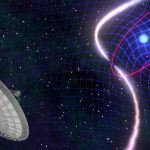It doesn’t get more sci-fi than this … and NASA is on board.
Key takeaways
- Nasa’s innovative advanced concepts (niac) program has awarded $175,000 grants to 14 projects aiming to turn sci-fi ideas into reality.
- Among the funded projects are a seaplane designed to fly on saturn’s moon titan and pipelines to transport oxygen between moon-based cities.
- Three niac projects focus on speeding up space travel, with the most ambitious being “pellet-beam propulsion” which uses laser-propelled particles.
- The pellet-beam system could potentially send a spacecraft to neptune in one year, much faster than current technology.
- Two projects aim to develop nuclear-powered propulsion systems, which could significantly reduce travel time to mars and beyond.
Far-flung science fiction frequently depicts mankind as an interplanetary (or perhaps galactic) society, although a significant amount of technical improvement is required to transition us from Earthbound terrestrials to spacefaring explorers. Fortunately, NASA offers the Innovative Advanced Concepts (NIAC) program.
NIAC, which is dedicated to the exploration of advanced space-based technologies, recently revealed 14 beneficiaries of a $175,000 grant to help bring some of these sci-fi inspired innovations to reality. Among these are TitanAir, a seaplane meant to fly through Saturn’s moon Titan’s nitrogen-and-methane atmosphere, and lunar pipelines intended to deliver oxygen between moon-based cities.
“NASA dares to make the impossible possible,” NASA Administrator Bill Nelson stated. “The NIAC program helps give these forward-thinking scientists and engineers the tools and support they need to spur technology that will enable future NASA missions.”
To make “the impossible possible,” as Nelson argues, scientists must overcome the most significant barrier to space travel: traveling from point A to point B significantly faster. Three of NAIC’s 14 initiatives attempt to rethink space travel, with the most ambitious being “pellet-beam propulsion.”
The Voyager missions traveled at just 3.6 AU (1 AU is the distance from Earth to the Sun) each year, taking nearly half a human lifetime to reach the heliopause. UCLA’s Artur Davoyan hopes to greatly accelerate the process by employing laser-propelled particles.
This pellet-beam propulsion system, like solar sail designs that have been around for years, could transport spacecraft weighing one ton to Neptune’s orbit in just one year—Voyager 2 took twice as long merely to reach to Jupiter. Extrapolated, this technology might reach 500 AU in 15 years, putting spacecraft smack dab in the dispersed disk of the Kuiper Belt.
The project’s Phase I inquiry will look into these intriguing but ambitious promises by modeling the pellet-beam technology’s subsystems and designing proof-of-concept investigations (with hopefully favorable findings).
Pellet beams aren’t the only propulsion technology available, as two additional NIAC programs look use nuclear reactors to propel people beyond the limitations of traditional rockets.
The first (and most well-known) is a new kind of Nuclear Thermal Propulsion (NTP) engine, a fission-powered propulsion system that is expected to cut travel time to Mars by at least 25%. Another suggestion is a nuclear fission fragment rocket engine, or FFRE, which NASA claims will be “exponentially more propellent efficient than rocket engines.” What’s the problem? Right present, FFRE engines are prohibitively large, extremely complex, and have significant thermal constraints—issues that Positron Dynamics intends to overcome.
Chemical rockets would continue to play a role in all three designs by enabling the first escape from Earth’s gravity. However, it is evident from these NIAC picks that NASA is keen to leap beyond the speed limit of today’s rocket.


